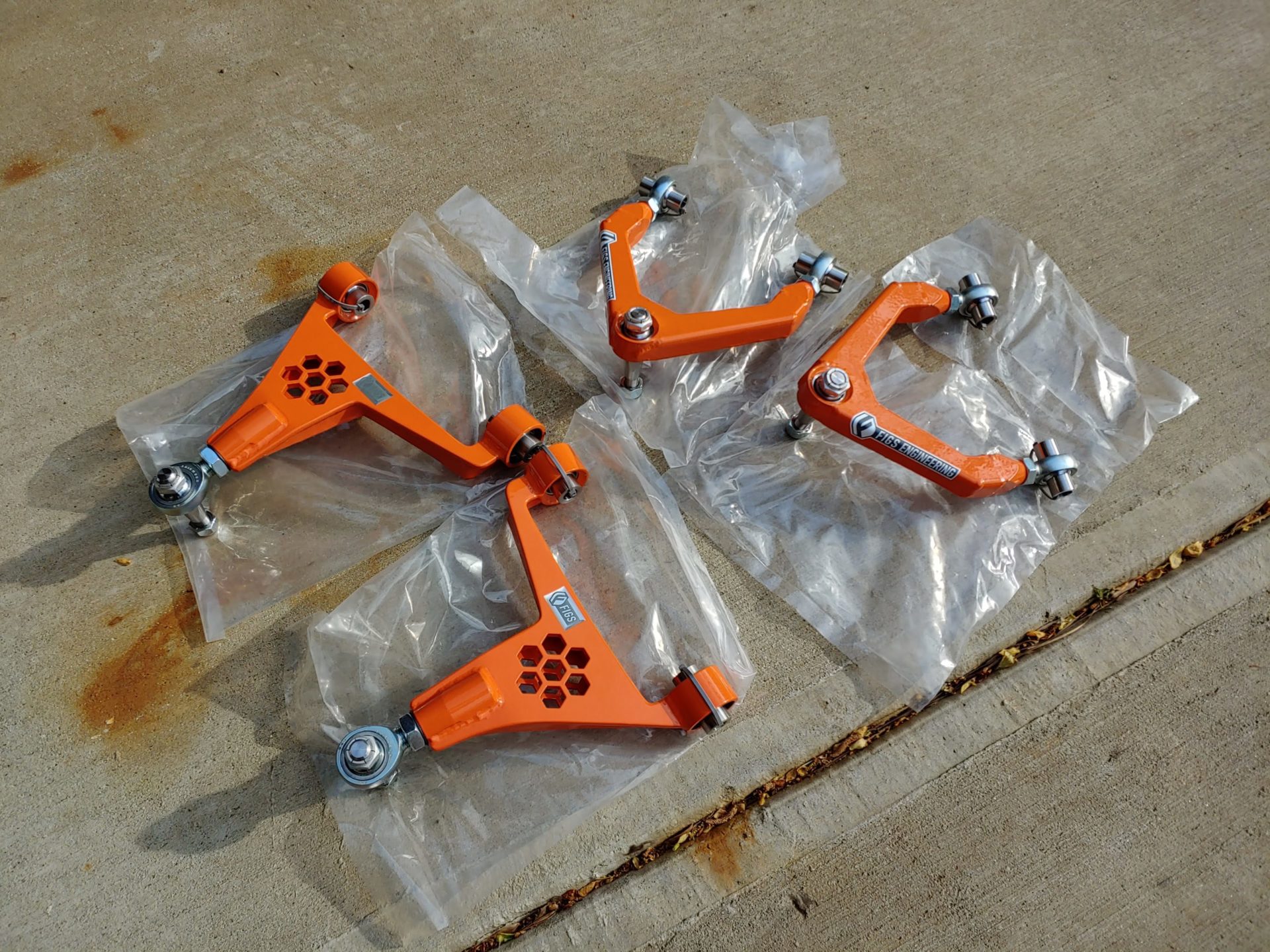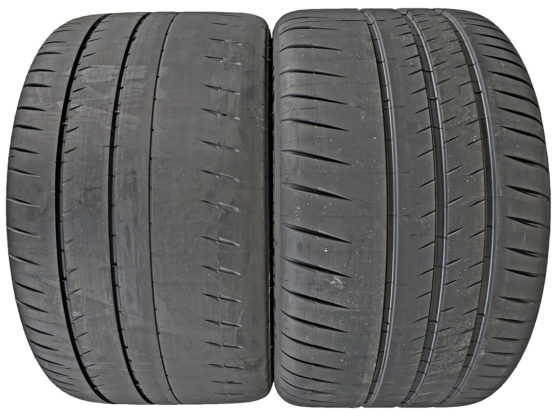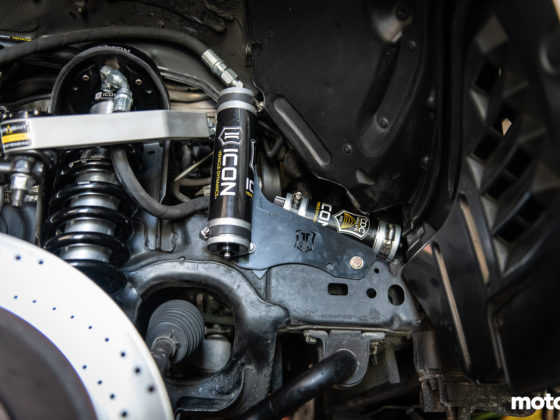
The Penske is only height adjustable via the spring perch, whereas the Fortune Auto is adjustable at the perch and at the body mount. Dampers that adjust at the mount or on the body can make setting the ride height easier for a range of uses, but they can result in needing to compromise on either the damper length or the damper volume or other damper features. In many cases, the damper company makes one “cartridge” and builds everything around that, so some applications end up with too little travel or other compromises. Sure, you can pound the car on the ground with a body mount design, but you can put your suspension into bizarre-o geometry land just as quickly.
Penske does not even offer a separate ride height mount on any of their sports car shocks – instead, they provide a wide range of body lengths and strokes. The 7500DA is an inline 2-way damper that has no remote reservoir. For this to be a body mount adjustable damper, it would mean putting the compression adjustment mechanism somewhere, which would end up making for a weird cartridge on the bottom. In the case of the lower mount for the SC300, that would be a problem. This complexity added to the lower mount does not net many conveniences, and, in this case, it would take away from Penske’s philosophy of having the damping adjustment as close to the piston as possible.
The nature of these shocks is less dependent on stroke position, also, so adjusting with preload and moving the index of stroke does not degrade their performance. FIGS chose the overall shock length to be as close to optimal as possible for this specific application (SC300/Supra).
Also, note that FIGS designed this coilover setup with an assist spring. At first glance, you might assume that this is purely a helper spring. What’s the difference?
According to Swift Springs, a helper spring has a negligible spring rate (near zero) and compresses fully flat when the car is at static ride height (on the ground). Its sole purpose is to keep the spring snug on the perches when the suspension is fully unloaded (for example: after bouncing off a curb or when lifting an inside wheel during hard cornering). At static ride height, an assist spring is also fully compressed. However, the assist spring features a higher spring rate, which aids in tuning the rebound travel of the shock. A helper doesn’t really do anything to extend a shock when it becomes unloaded, but an assist spring does. This can help prevent a wheel from coming off the ground during hard cornering.
In the case of this particular FIGS setup, the assist spring is mostly used in a helper function to keep the spring stack snug at full droop. Lowering the car would require lowering the spring perch, which means I could end up with the spring coming loose at full droop. In that case, either a longer main spring or adding a helper spring would be required. I’m not a particular curb-y driver (yet), but I also don’t know if the car is low enough at speed. So, we’ll start with this set up and figure it out as we go.

TAKE SPECIAL NOTE OF THE POSITION OF THE SCHRADER VALVE! LACES OUT!
One of the other features of the 7500DA is adjustable gas pressure. You can set the pressure using nitrogen (ideally) or regular air (if you must). This provides an extra tuning measure, mostly around “feel.” Yes, that’s very scientific.
Why should you take note of the position of the Schrader?

If you install the damper the other way around, the Schrader will contact the LCA when the suspension compresses. At first, you will think your jack exploded when you hear a pop/hiss as you compress the suspension with it. Then you will swear a lot and realize that you just crushed the damper Schrader and let all the damper gas pressure out.
Then you realize the swaybar end link bolt was dragging on the threads, and you hope you don’t need to replace a whole shock before you ever used it.
Damnit!
Where was I going to find someone to fix this shock? Fortunately for me, I live in Atlanta, which is very motorsports-y. There happens to be a Penske dealer, Traxxion Dynamics, not far from me.
I called them up and found out that they focus on motorcycles. But Penske is Penske, and they were able to order me up a new Schrader and cap. So I packed up all the dampers before ever installing them and headed over there. Yes, I popped the very first shock I tried to install.
Damnit!




1 comment
Those Penskes are nice, but pricey. A set of 4-way adjustable ones for my FR-S is like $11k! Definitely a pro-user setup.